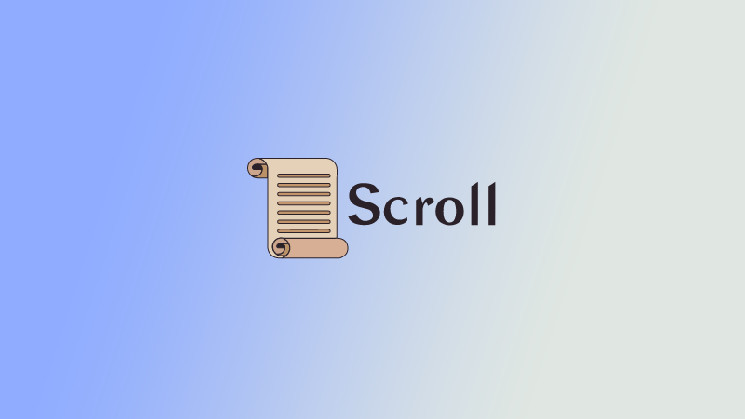Blockchain
Scroll launched a testnet model of its Ethereum Layer 2 community on the Goerli testnet, shifting the zk-EVM from a pre-alpha to an alpha testing part.
Till now, Scroll was obtainable to check out on a testnet that was constructed on the undertaking’s personal clone of Ethereum. By shifting from this to operating on a public testnet, Scroll has taken a step ahead in its path towards a full launch within the second half of this yr.
“We’ve been testing with mock mainnet transactions on our pre-alpha testnet however by having a extra public testnet you may have extra time to battle take a look at it and guarantee that every part is working correctly — due to the massive problem of constructing a system like this,” mentioned a researcher often known as Pseudotheos at Scroll, in an interview.
The testnet will likely be permissionless however it is going to stay largely centralized, notably by way of the computer systems that do the advanced processing required for the community to function. The code for the community will likely be open-source, that means that the community can begin constructing resiliency. Additionally, a bridge has been set as much as switch property between the Goerli testnet and Scroll.
Scroll has been engaged on its community for 2 years and at present has 60 group members, alongside a wider community of exterior contributors.
What are zk-EVMs?
Zk-EVMs are Layer 2 networks constructed on Ethereum that use zero-knowledge proofs to realize scalability. The EVM half refers back to the Ethereum Digital Machine (EVM), the bit that runs functions as an alternative of merely processing them. By being EVM-compatible, these networks are in a position to help Ethereum functions whereas additionally operating at scale.
There are two capabilities that make a zk-EVM work. First the sequencer batches up lots of transactions. Then the prover does the advanced zero-knowledge proof calculations to generate a proof that these transactions are all official. This proof is then broadcast to the Ethereum community and the transactions get accepted.
Proper now, Scroll is getting its community out in public so it may be battle examined however on the similar time, it’s engaged on decentralizing the sequencer and the prover — a key requirement of constructing the community decentralized.
“We need to construct probably the most sturdy and safe zk-EVM on the market and that’s why we’re doubling down and dealing on a decentralized prover and sequencer community. After mainnet, that’s our essential precedence,” mentioned Pseudotheos. “After the zk-EVM will get out the door, we’re not even near completed. We’ve years of labor lower out for us, so far as correctly decentralizing — however that’s our essential precedence.”
Scroll has an in-house safety group attempting to verify the community is safe. It has additionally frozen a few of its codebase and despatched it to an auditor for evaluation. It plans to have additional audits down the road.
Why Scroll is taking the tougher route
There are two essential ways in which zk-EVMs might be constructed (technically extra in-between, however let’s not go too deep).
On one aspect, you should use a programming language designed for zero-knowledge proofs after which must translate Ethereum functions from Solidity — Ethereum’s native language — to the brand new language. That is simpler to construct however makes life tougher for builders porting from Ethereum to the platform.
On the opposite aspect, you may construct a zk-EVM to make use of the identical code at present used for Ethereum functions. This makes it very easy to port functions over to the community. Nonetheless, it is a a lot tougher process as a result of zero-knowledge proofs work in a really completely different approach to how the Ethereum Digital Machine operates — so it’s important to code them to work in a method they’re not designed to.
Scroll is taking the tougher path to constructing a zk-EVM, however, it hopes, one which will likely be extra suitable with Ethereum and may spearhead better adoption.
“When the EVM was designed, it was not designed for zero-knowledge proofs in thoughts in any respect. The way in which you write a zero-knowledge program is totally completely different from the way in which you write conventional software program,” mentioned Pseudotheos.
This method is sort of like writing a sentence in English whereas complying with the syntax guidelines of one other language. Difficult however not not possible.
It has advantages: it ought to make it a lot simpler for Ethereum builders to construct on Scroll and port their initiatives to it. And that’s why Scroll reckons the exhausting graft will likely be value it.
Polygon can also be engaged on this kind of zk-EVM, whereas StarkWare is taking the alternative method and zkSync is someplace between the 2.
Whereas Scroll is neck and neck with a number of different initiatives aiming to deliver out a zk-EVM, Pseudotheos doesn’t suppose being first to market will make a lot of a distinction. They pointed to Arbitrum and Optimism, which had been launched a number of months aside — but are each nonetheless discovering traction.
“It does not matter who’s first,” they mentioned. “I feel that there’s room for co-existence, particularly as lots of these rollups are taking completely different approaches and their nuances with [zero-knowledge proofs].”






